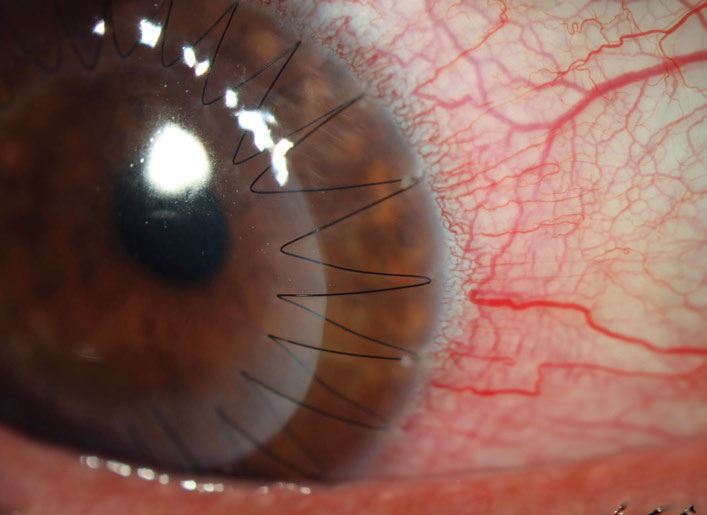 |
| Endophthalmitis rates vary by type of keratoplasty, US region in which the surgery took place, and Charlson Comorbidity Index, which predicts 10-year mortality for patients with various comorbid conditions. A free online CCI calculator is available from MDCalc. Perhaps not surprisingly, endophthalmitis rates were higher among patients who underwent penetrating keratoplasty vs. a lamellar procedure. Photo: Aaron Bronner, OD. Click image to enlarge. |
Post-surgical infection is a serious complication, and steps to reduce the risk of endophthalmitis are key. Prevention of endophthalmitis for cataract and glaucoma surgeries is well documented, but less is known about the risks after keratoplasty. To study the rates of endophthalmitis after keratoplasty and its sociodemographic influences, researchers conducted a retrospective study of Medicare patients over the age of 65 who underwent various types of keratoplasty between 2016 and 2019. They found that the infection rates varied by the type of keratoplasty and that it’s important to counsel patients at high risk.
In total, 54,822 corneal transplants were included in the analysis. Early endophthalmitis was deemed occurring within 42 days of keratoplasty, based on diagnostic codes. The researchers reported a 0.39% overall rate of infection, with a 14-day median time to diagnosis. Early endophthalmitis rates by keratoplasty type varied, with 1.31% for cataract surgery combined with penetrating keratoplasty; 1.13% for penetrating keratoplasty; and 0.22% for endothelial keratoplasty. Multivariable analysis showed that the chances of endophthalmitis were higher with penetrating keratoplasty and anterior lamellar keratoplasty vs. endothelial keratoplasty.
The researchers also reported in their Cornea paper that patients with a Charlson Comorbidity Index (CCI) ≥3 had a greater likelihood of endophthalmitis vs. those with a CCI of 0. “Corneal surgeons should counsel patients with a CCI ≥3 about their increased risk for endophthalmitis,” they wrote in their paper.
Risk also varied by region, with patients in the Midwest, West or Northeast having lower odds of infection than those in the South. A previous study reported that post-cataract surgery endophthalmitis rates were highest during hot and humid months, which may account for some increased risk, in addition to greater likelihood of fungal infection in the South.
“Our results may help physicians counsel patients regarding the risk of developing endophthalmitis after corneal transplant,” the researchers wrote in their paper. “The rates of postoperative endophthalmitis reported in our study may also be used to establish national benchmarks for monitoring the quality of corneal transplants across the country.”
Ali M, Dun C, Chen A, et al. Early endophthalmitis rates and risk factors after corneal transplant surgeries in Medicare beneficiaries from 2016 to 2019. Cornea 2023;00:1-9. |

